- Author Matthew Elmers [email protected].
- Public 2023-12-16 21:49.
- Last modified 2025-01-24 09:17.
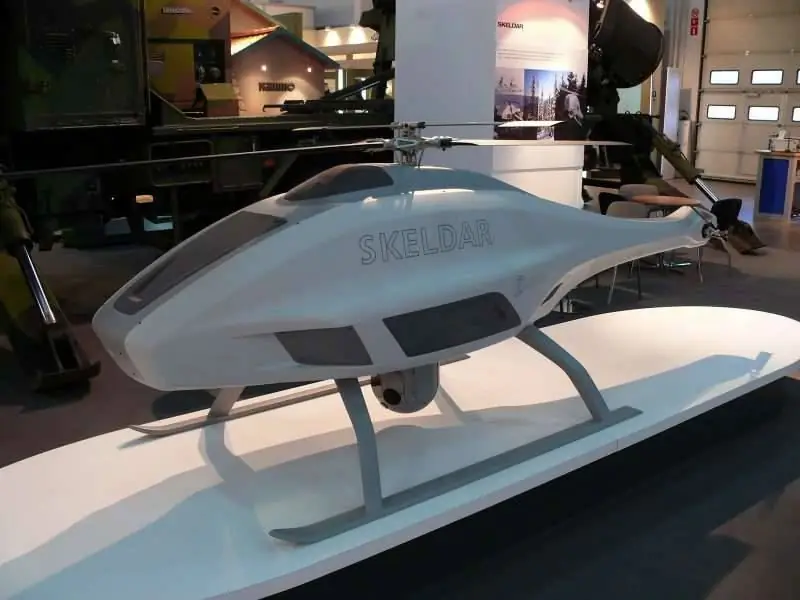
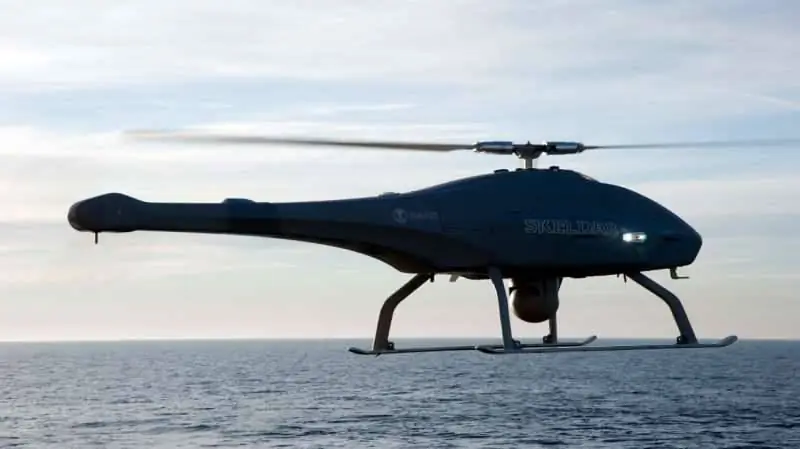
UAV helicopter type Skeldar manufactured by Saab
New developments
In the field of vertical take-off and landing systems development also includes the announcement made in December 2015 that Saab will create a joint venture with the Swiss UMS Aero Group to promote its Skeldar UAV family. The UMS Skeldar joint venture will receive all of Saab's Skeldar UAV assets, while retaining a 47 percent stake in the new company. According to Saab, the partnership will place an increased emphasis on marketing the Skeldar heliport, combining Saab's extensive aviation expertise with the flexibility of a small company. UMS Skeldar, after its creation, announced that its UAVs, including Skeldar, will integrate AMOS software for maintenance, repair and modernization from the Swiss company Swiss-AS.
The American company UAV Solutions continues to successfully implement the Phoenix-30 project; in January 2016, four systems were supplied to the Romanian army under the program for the sale of weapons and military equipment to foreign states. The UAV was delivered with the Dragon View stabilized optoelectronic station installed along with ground control stations, spare parts and ground support equipment. The Phoenix-30 quadrocopter with an electric drive weighing 6, 3 kg is capable of carrying a load of 0.9 kg. Depending on the task being performed, the flight duration is up to 35 minutes, the maximum speed is 44 km / h and the cruising speed is 28.7 km / h. Typical working heights are up to 150 meters. At the end of 2014, UAV Solutions delivered the same system to the Bulgarian army. Bulgarians received four systems and the company completed operator training in July 2015.
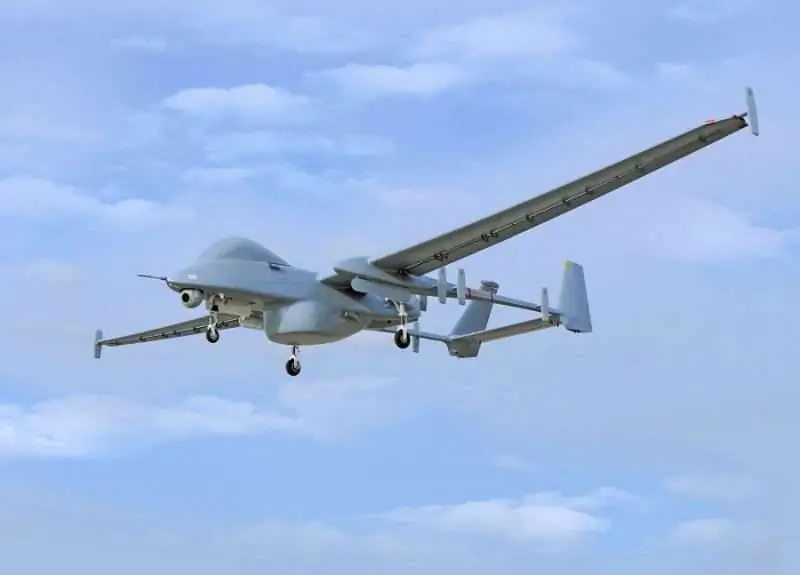
IAI's Maritime Heron drone is capable of taking off and landing independently from an airfield or an aircraft carrier, carrying various devices and sensors that provide full capabilities for collecting information
The Israeli company Tactical Robotics also announced new developments, in particular the first non-tethered flight of the AirMule heliport, made in January 2015 at the Megiddo airfield in northern Israel. The monochromatic device is being developed as an unmanned cargo delivery system, the lifting screws of which in the guide nozzles allow flying in an obstacle space where helicopters cannot operate, as well as from ships that are too small for a standard unmanned helicopter. The AirMule prototype is powered by one Turbomeca Arriel 1D1 turboprop, but future production vehicles will be powered by an Arriel 2 engine with increased takeoff power. The current test schedule at Megiddo airfield includes plans to demonstrate AirMule self-delivery of cargo and non-line-of-sight flights. The export version of the system called Cormorant (cormorant) will be able to carry a payload of 440 kg at a distance of up to 300 km, but at short distances it will be possible to increase the mass of the payload. The drone has a cruising speed of 100 knots (185.2 km / h) and will be capable of operating at altitudes up to 5500 meters. According to Tactical Robotics CEO Raft Yoeli, the AirMule drone will meet the safety criteria for helicopters and the company is confident that “over the next few years, this system will go into operation, providing disruptive capabilities to any military or civilian organization that needs robotic delivery systems for supplies and other tangible property to places inaccessible to other vehicles."

The MQ-4C Triton UAV, manufactured by Northrop Grumman for the US Navy, prepares to land at Patuxent River AFB
Fixed wings
2015 was also a busy year for Northrop Grumman and the US Air Force's RQ-4B Global Hawk drone program. In May 2015, the RQ-4B project reached the Milestone C approval stage (serial work), after which the modernization process could begin as part of this program. This upgrade will build on the shared desire of Northrop Grumman and the US Air Force to add a variety of additional equipment on board, such as new optoelectronics to enhance the system's counterinsurgency, anti-piracy, disaster relief, and airborne communications relay platforms. exchange of information. Prior to approval, the program demonstrated a target level of software readiness and interoperability with other systems within the planned spending of the Department of Defense.
Northrop Grumman was awarded a new $ 3.2 billion framework contract in September 2015 to develop, upgrade and maintain the RQ-4B UAV fleet through 2020. The contract follows several years of turbulence as the US government rushed back and forth between plans to decommission the fleet of these drones in favor of investing in Lockheed Martin's U-2S Dragon Lady manned reconnaissance aircraft, or vice versa. The RQ-4B's lower operating costs won, and Northrop Grumman will be doing the modernization work for the time being. US Air Force PR, Major Robert Lees, explained that the contract for an unspecified quantity and delivery time will support future development work on the RQ-4B project over the next five years, during which upgrades will be carried out to meet the operational needs of the United States Air Force and maintain or improving the performance of the drone. “Ongoing enhancements to the capabilities of the current RQ-4B UAV include sensor upgrades and integration, ground segment modifications, anti-icing… upgrades of communications and flight programs,” continued Major Liz. “The purpose of this separate contract is to implement future improvements and upgrades that the US Air Force will require. These upgrades are designed to meet or exceed operational requirements in conjunction with efforts to improve overall RQ-4B system reliability and mission efficiency.” Most likely, they will also include work to increase the drone's ability to carry more onboard sensors in order to ensure greater consistency with the capabilities of the U-2S reconnaissance aircraft through a new universal adapter for onboard equipment developed by Northrop Grumman.
In a series of flights conducted in August 2015, Northrop Grumman also demonstrated a new approach to mission management, during which the RQ-4B responded to external requests "to dynamically change its flight path and sensor functionality." The company called this a move away from the one-user paradigm to the one-UAV paradigm. The work is being carried out in response to customer requirements for standardized control and command systems for various UAVs, as well as in support of the broader goals of the US Air Force associated with their program for the Common Mission Control Center (CMCC). The demonstration, which showed the coordinated actions of the RQ-4B drone with CMCC, using a new standard for interaction between different weapons systems, showed that the device is capable of adopting advanced combat mission control capabilities without changing its software.
According to current plans, the RQ-4B drone should end in the early 2030s. “The lifespan of an RQ-4B drone can be determined in three ways, a calendar lifespan of 20 years, 40,000 flight hours and / or 1,800 landings,” says Major Reese."At the current utilization rate, the device can serve after 2032 without any measures to extend its service life."
As for where the RQ-4B program is directed, the Air Force believes that the UAV still has room to move and develop. “The RQ-4B has been the Air Force's workhorse in reconnaissance operations and its contribution is invaluable. Whether it is setting goals, relaying communication channels or providing humanitarian crises, this platform has proven to be effective, reliable and versatile. It will offer the broadest range of uses in the coming decade. The range and duration of the flight over 30 hours allow for extreme functional flexibility to meet the requirements of the task at hand. The RQ-4B is a future US Air Force intelligence platform with enhanced combat capabilities to help fulfill the strategic plans of the Air Force,”concluded Major Reese.
Export sales of the RQ-4B are also gaining momentum. In February 2015, Northrop Grumman, as part of an agreement with the US government for the sale of military equipment abroad (FMS), began production of four RQ-4Bs for delivery to South Korea. In accordance with a contract signed in December 2014, four drones, two ground control stations and support equipment will be supplied to the South Korean army in 2018. The Korean deal marks an important milestone in the program as it is the first sale of RQ-4 drones to an allied country under an FMS agreement. The deal follows a January 2015 request from the Japanese government for a similar vehicle (also under an FMS agreement) and Australia's 2014 choice of the MQ-4C Triton naval version of the RQ-4B drone.
Global horizons
The Australian MQ-4C Triton drone will be used by the Australian Air Force for maritime patrols and high-altitude surveillance. Starting in 2020, up to seven drones will be based at Edinburgh Air Force Base in southern Australia. There they will work in conjunction with Boeing P-8A Poseidon patrol aircraft when they enter service later this decade to replace the aging Lockheed Martin AP-3C Orion aircraft. As in the case of the MQ-4C aircraft for the US Navy, for which it has been developed since 2008, the Australian drone will have reinforced hull and wings, anti-icing and lightning protection systems installed so that the device can descend through the clouds and take a closer look at ships and targets at sea.
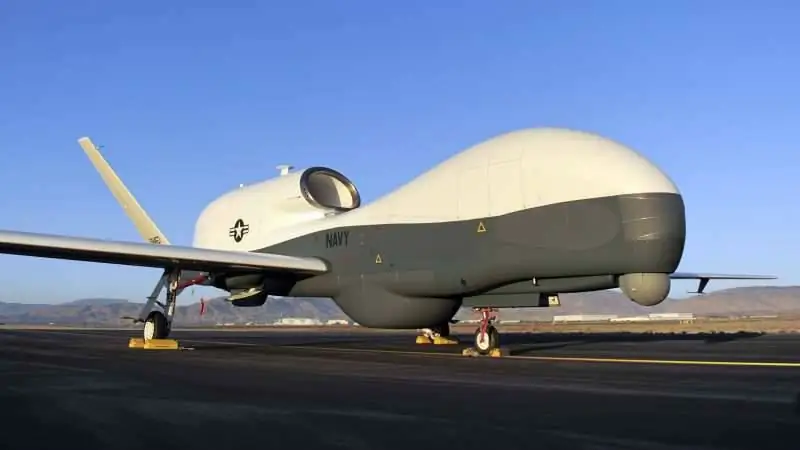
Drone MQ-4C Triton
The latest news on the US Navy's MQ-4C drone development program was made public in November 2015, when the Navy's Aviation Systems Command announced that an operational readiness assessment had begun. As part of this assessment, which was due to end in January 2016, six flights of the drone and various operational scenarios were carried out to assess its performance during this phase of the program. These scenarios reflect three intended tasks: information gathering, surface combat, and landing force operations. He also passed tests to test the ability to detect, classify and track targets day and night; in addition, problem areas were identified for a subsequent phase of operational testing and evaluation. Milestone-C phase (mass production) approval was planned for early 2016. The fleet's priority program provides for the purchase of 68 MQ-4C vehicles. These advanced land-based systems will provide continuous sea reconnaissance using a variety of sensor systems. The first three drones will be procured by the fleet on schedule in 2016, and the first one will be fully operational by 2017.
Ground mobile robots
The ground vehicle market remains vibrant as explosive ordnance disposal technology improves and new technologies become more available. For example, in August 2015, the American company Sarcos presented a new snake-like robot Guardian-S weighing 3.6 kg. The robot, which the company believes will be the first system of its kind available to the civilian sector, is designed for use in several areas, including public safety (combat missions, explosives, hazardous substances, firefighting, search and rescue), security, disaster recovery, infrastructure inspection, aerospace, maritime security, oil and gas and mining. The system can operate for up to 48 hours, traveling several kilometers between recharging batteries. The robot can carry a set of sensors in its compartments, externally on top of the track sections, or inside the center section (including multiple cameras); it can operate in hazardous or challenging locations, transmitting live video and other data over multiple wireless protocols over long distances. It can also integrate third-party sensors.
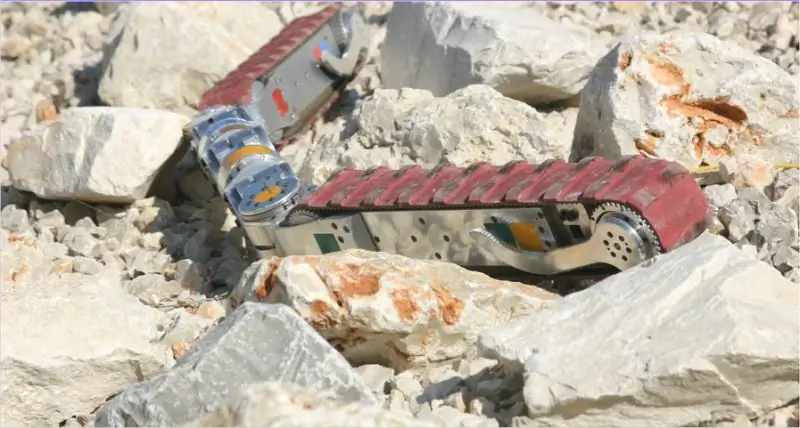

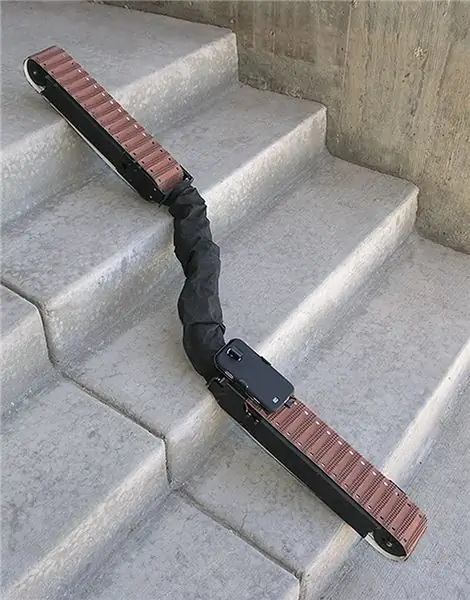
The Guardian-S non-volatile snake-like robot is designed to work not only in the industrial field, but also for use in military and police tasks.
Sarcos designed this mobile phone interface system to provide real-time remote control using WiFi technology for distances up to 200 meters and a cellular network that extends the range to almost infinity (as long as cellular communication is available). The Guardian-S Linear Track allows you to confidently tackle difficult terrain that other parallel track HMPs cannot tackle, including climbing steps or going through narrow pipes and manifolds. It can also examine a wide variety of vertical surfaces, climb in and out of storage tanks, pipes, ships, vehicles, etc. “The robot was originally created as part of the Defense Advanced Research Projects Agency (DARPA) robotization program, which was aimed at developing innovative HMP capabilities to perform search and rescue operations in a variety of challenging urban environments,” a company spokesman said. - Other projects have led to the creation of a snake searching for mines and volumetric mapping of tunnels in border security tasks. In all cases, it has proven itself as a touchscreen platform with superior accessibility to hard-to-reach areas."
The Guardian-S has been supplied to a number of unnamed customers and Sarcos believes that the system's ability to configure a wide range of reconnaissance, search and rescue, local and continuous surveillance applications opens up exciting opportunities in the market. “Thanks to the superior performance of this robot, we are seeing tremendous interest from commercial and government customers. It can go where other robots cannot and move further, faster, and perform surveillance for extended periods of time compared to other robots of similar size on the market. We believe the market opportunity is enormous for robots that are of the same size and capabilities as the Guardian-S. I think that the needs of the global market will exceed tens of thousands of robots over the next ten years."
Estonian company Milrem has also created a new HMP, first presented at London's DSEI 2015. The system, funded by the Estonian Ministry of Defense and not yet specifically designated, is intended for military operations. This machine weighs 700 kg, has a diesel-electric drive, the operating time is 8 hours, and the robot can also work as an all-electric system. Although the robot is designed with remote control, it can move independently along predefined coordinates.
The French company Nexter Robotics in February 2015 announced detailed information about the new functionality of its family of Nerva robots. Two new functional modules were introduced: a 3D vehicle scanning module and a two-way audio communication module, as well as a set of tracks that allows you to increase the deployment area in rough terrain, including overcoming steps. A lighter, portable control station with simplified robot control functions was also introduced. In addition, semi-automatic functions have been developed, including human following, autonomous navigation, and multiple robot control.
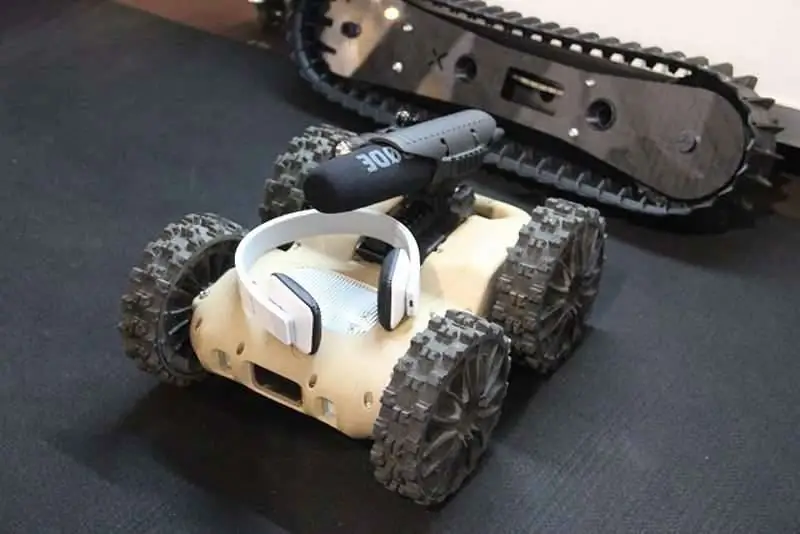
French company Nexter Robotics unveils Nerva robot with two-way communication module
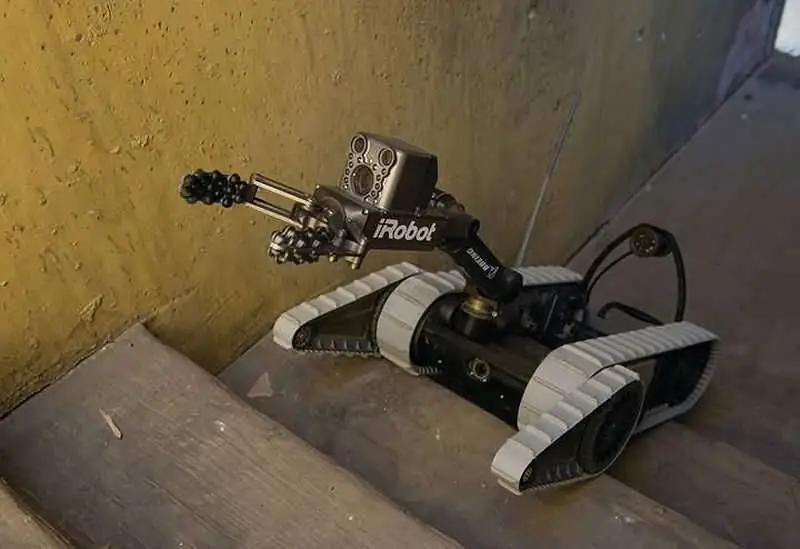
The iRobot 310 system has impressive flotation, it is equipped with a "dexterous" manipulator arm and a wearable control console for dismounted operations
Explosion threat
Northrop Grumman Remotec also introduced the new HMP Andros-FX in June 2015. It was created on the basis of the successful Remotec F6 family and aims to complement the missing features in the market. “A combination of factors led to the FX project after we surveyed the market, including documents from the National Advisory Council of Explosive Commanders to identify areas where they lacked the capabilities of the systems currently deployed,” said a sales manager at Remotec. Mark Kochak. “We also had discussions with our customers, which gave us valuable insight into where to go with our products; we also studied some overseas markets and opportunities. As a result, we have developed requirements for Andros FX. The main threat that has emerged relatively recently in the United States and other countries has become cars equipped with explosives, so we focused on the manipulation capabilities of the arm, while increasing its carrying capacity, as well as improving the mobility of the robot."
Enhancements to this system include four track units replacing the traditional Andros track segments (called "articulators" after the swinging mandible), and a new arm design that added roller joints to provide nine degrees of freedom for greater agility and increased load capacity. The electronics have also been updated, the speed and maneuverability of the device have been increased, a new touchscreen control unit with three-dimensional graphics, advanced manipulator controls and an improved user interface have been developed.
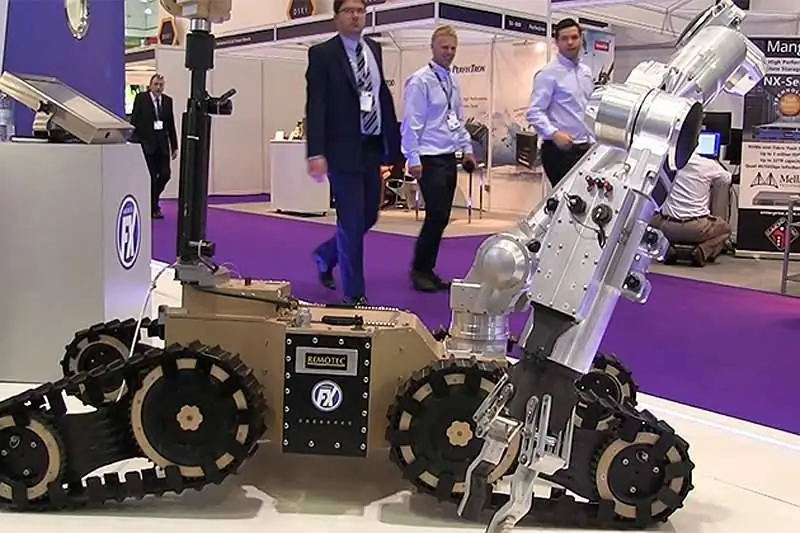
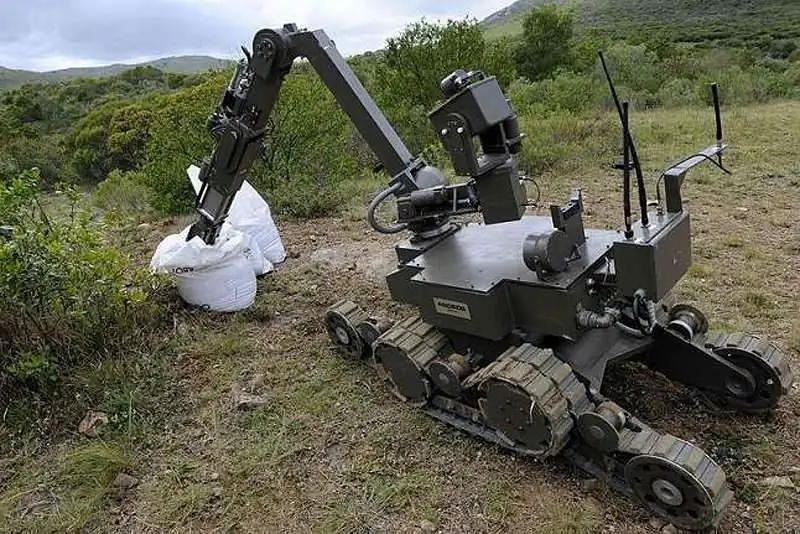
Andros-FX explosive ordnance disposal robotic complex
While the FX robot's capabilities are aimed at finding explosives in vehicles, it is not limited to these tasks; rather, it is designed for the disposal of explosives by the military and emergency services in general. In the United States, where bomb squads usually do a lot of SWAT support work, they have led to the integration of SWAT equipment. For example, the FX robot can use chemical and radiation sensors, and the ability to climb steps allows it to enter a building as a versatile reconnaissance tool for users. “We took Northrop Grumman's Titus robot interface and improved it, we also spent a lot of time and effort on reducing life cycle costs and simplifying system support, maintenance and repair, and even developing an algorithm for future on-site upgrades,” continued Kochak. “And when we put it all together, we saw that there was nothing like it on the market.”
Remotec has conducted several demonstrations for US and foreign users, including explosive ordnance disposal devices commonly used by the UK Department of Defense. “The feedback we've received from the manufacturer is that the FX robot has proven to be the most stable platform from which their firing devices have fired. In general, we receive positive feedback on the capabilities of the new system and this is a real breakthrough in the fight against such a threat."
Remotec has also implemented a much more open architecture in the FX project in response to requests for how it sees the system entering the market. “Customers, particularly in the United States, are in particular demand for the systems' ability to easily integrate third-party subsystems,” Kochak continued. - This is one of the key components of the US Army's advanced robotic explosive ordnance disposal system AEODRS (Advance Explosive Ordnance Disposal Robotic System). Therefore, from a market point of view, entering only Remotec solutions, only iRobot solutions or only QinetiQ solutions is not the best approach these days. The ability to integrate subsystems from other vendors is what customers expect in the future.”
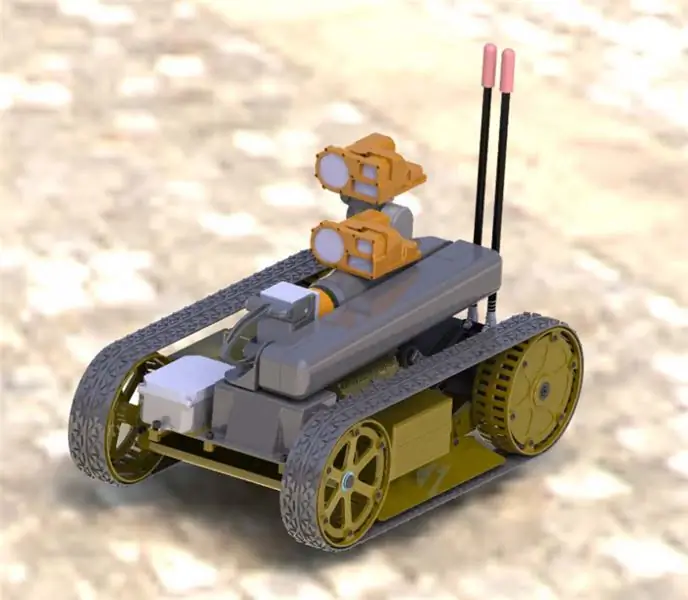
The concept of the advanced robotic explosive ordnance disposal system AEODRS (Advance Explosive Ordnance Disposal Robotic System)






